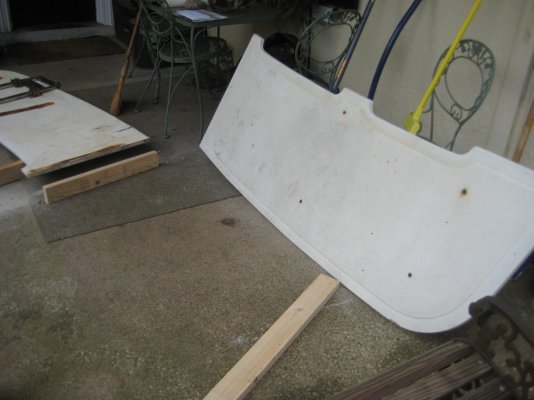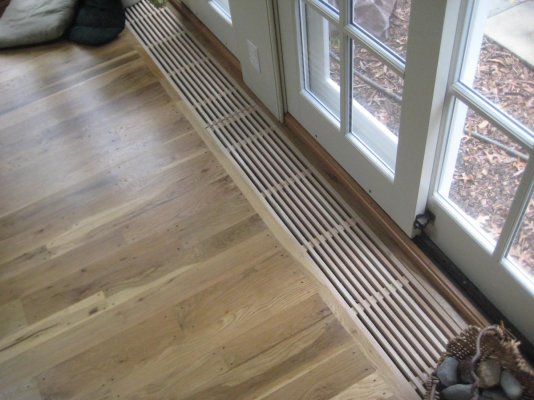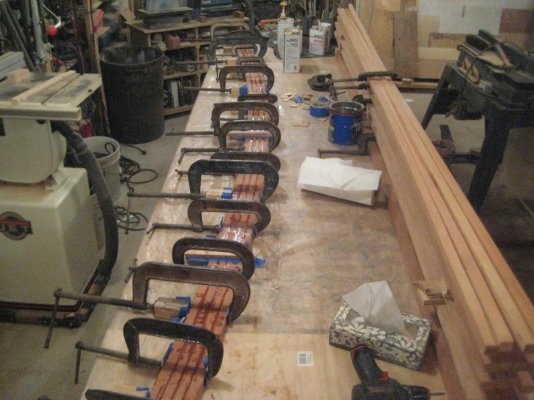DHeckrotte
Guru
It's not even March, but we did not have winter this year in Philly. Went down to the boat, Tuesday, in Rock Hall, MD, where the staff of Swan Creek Marina will be commencing work on the engines - a story for another time.
I came back with the swim platform and the ladder down to the forepeak. It was all I could do to lift my end of the platform. About 3/4" thick, 12'-3/4" long, and 2'-4" wide. I measured it using a string line to take offsets to the transom edge, and anything else easy before I sawed it in half so that I could carry it into my basement shop. Turns out it's balsa cored. But, it's been the first thing to reach a piling a few to many times; the edges are cracked and the balsa is mush at every fastening.
The local fiberglass shop said it was not reliably repairable and they'd make a new one for $4500. I will use it as a pattern to make a new wood platform. Thinking of using Ipe or some other decking/boardwalk material. Maybe even one of the plastic plank products. Still mulling alternatives, of course, even thinking I could epoxy strips of decking to form the required curved profile. Straight pieces of would would require rather short lengths spanning to each bracket, which would not be nearly as stiff as continuous lumber.
Pics below. The rust stains are from the stainless steel brackets and fasteners.
I came back with the swim platform and the ladder down to the forepeak. It was all I could do to lift my end of the platform. About 3/4" thick, 12'-3/4" long, and 2'-4" wide. I measured it using a string line to take offsets to the transom edge, and anything else easy before I sawed it in half so that I could carry it into my basement shop. Turns out it's balsa cored. But, it's been the first thing to reach a piling a few to many times; the edges are cracked and the balsa is mush at every fastening.
The local fiberglass shop said it was not reliably repairable and they'd make a new one for $4500. I will use it as a pattern to make a new wood platform. Thinking of using Ipe or some other decking/boardwalk material. Maybe even one of the plastic plank products. Still mulling alternatives, of course, even thinking I could epoxy strips of decking to form the required curved profile. Straight pieces of would would require rather short lengths spanning to each bracket, which would not be nearly as stiff as continuous lumber.
Pics below. The rust stains are from the stainless steel brackets and fasteners.










